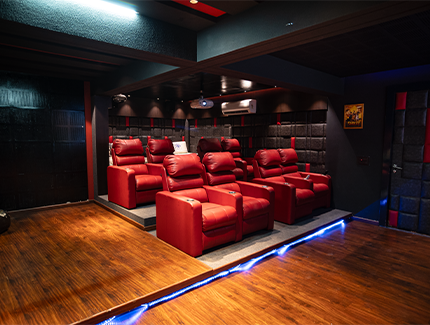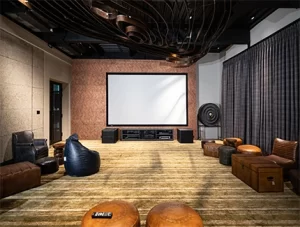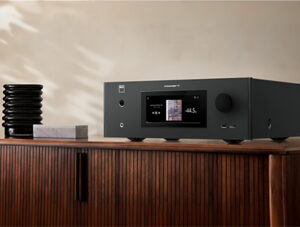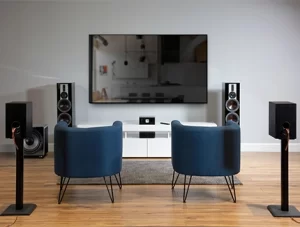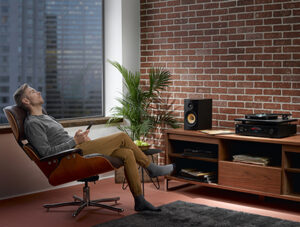Introduction
Transform your living room into a cinematic haven with meticulously planned home theater seating. This comprehensive guide dives into everything you need to consider when choosing the perfect seating arrangement for your movie nights.
From understanding ideal viewing positions to exploring various seating styles and maximizing acoustics, we’ll equip you with the knowledge to create an immersive and comfortable home theater experience.
What is the Ideal Seating Position in a Home Theater?
The ideal seating position in your home theater depends on several factors, including screen size, viewing distance, and personal preference. Here’s a breakdown of key considerations:
- Screen Size: As a general rule, the optimal viewing distance for a home theater is roughly 1.5 to 2.5 times the screen’s diagonal width. Sitting closer allows for a more immersive experience, while further back provides a wider field of view.
- Viewing Angle: Ideally, you want to be positioned directly in front of the center of the screen to minimize distortion and ensure a clear view. Avoid sitting at extreme angles, as this can lead to neck strain and a less enjoyable viewing experience.
How to Arrange Home Theater Seating in Your Room
Planning your seating arrangement involves considering several factors:
- Room Size and Shape: Measure your room to determine the available space for seating. Rectangular rooms offer more flexibility compared to square rooms. Consider sketching your room layout to visualize different seating configurations.
- Number of Seats: Decide on the number of seats you need to comfortably accommodate your family and guests. Consider leaving enough space for walking paths between seating rows.
- Speaker Placement: Surround sound plays a crucial role in creating a cinematic atmosphere. Ensure your seating arrangement allows optimal sound dispersion from your surround sound speakers. Aim for an even distribution of speakers around the room, including behind and to the sides of your seating area.
- Traffic Flow: Plan your seating arrangement to allow for easy movement in and out of the home theater. Avoid creating bottlenecks or obstructing access points.
How Do You Set Up a Home Theater Seat?
Once you’ve chosen your seating arrangement, consider the specific features and functionality of the seats themselves:
- Seat Height: The first row of seats should be positioned slightly higher than the back rows to ensure everyone has a clear view of the screen. Consider tiered seating risers for optimal viewing angles, especially in larger home theaters.
- Reclining Features: Reclining seats provide a more comfortable viewing experience, allowing you to kick back and relax during movies. Choose reclining options with adjustable settings for personalized comfort.
- Headrests and Armrests: Adjustable headrests and armrests further enhance comfort and support while watching movies.
- Cup Holders and Storage: Built-in cup holders and storage compartments offer convenient storage for drinks and snacks during movie nights.
The Golden Ratio for Home Theater Seating
The “golden ratio” is a concept borrowed from mathematics and design that suggests a visually pleasing arrangement. While not a strict rule, it can be used as a guideline for home theater seating:
Divide the screen width by 1.618. This number represents the golden ratio.
This number represents the ideal distance for the first row of seats to be placed from the screen.
What is the Minimum Room Size for a Home Theater?
There isn’t a single minimum room size for a home theater. However, consider these factors:
- Screen Size: The ideal room size will depend on your desired screen size and viewing distance. Larger screens require a larger room to maintain optimal viewing distances.
- Speaker Placement: Surround sound speakers need adequate space for proper placement. Ensure your room is large enough to accommodate speakers without compromising sound quality.
- Seating Comfort: Allow enough space for comfortable seating arrangements while maintaining walking paths and avoiding a cramped feel.
What Size Room for Acoustics?
Acoustics play a vital role in creating a truly immersive home theater experience. Room size and shape can significantly impact sound quality:
- Avoid Cube-Shaped Rooms: Cube-shaped rooms can create standing waves, leading to uneven sound distribution. Consider rectangular-shaped rooms for better sound dispersion.
- Sound Absorption: Adding sound-absorbing materials like acoustic panels or thick curtains can help control echo and improve sound clarity.
- Diffusion: Diffusers help scatter sound waves, preventing them from bouncing off walls and creating unwanted reverberation.
Beyond the Considerations Mentioned Above, Here are Additional Tips for Creating Your Dream Home Theater:
- Lighting: Dimmable lighting controls allow you to create an optimal viewing environment. Consider installing recessed lighting or installing lights behind the screen for a more cinematic experience.
- Ventilation: Proper ventilation is essential for maintaining
Beyond the Basics: Exploring Different Home Theater Seating Ideas
Now that we’ve covered the fundamental considerations for home theater seating, let’s delve into specific seating styles and explore options to suit your preferences:
Traditional Home Theater Seating
Traditional home theater seating offers a classic and comfortable experience. Choose from a variety of materials like leather, fabric, or a combination of both. Popular options include:
- Individual Theater Seats: These provide a luxurious touch and offer features like reclining mechanisms, cup holders, and adjustable headrests.
- Home Theater Sectional: Sectional sofas offer flexibility and are ideal for larger spaces. They can be arranged in various configurations to accommodate your seating needs.
- Home Theater Loveseats: Loveseats provide a cozy option for couples or smaller home theaters. Look for reclining loveseats with built-in features for added comfort.
Modern Home Theater Seating
Modern home theater seating prioritizes sleek aesthetics and contemporary design. These options often feature clean lines, bold colors, and innovative materials:
- Home Theater Sofas: Modern sofas can be a stylish addition to your home theater. Look for options with firm cushions and good back support for a comfortable viewing experience.
- Modular Seating: Modular seating allows for ultimate customization. Mix and match different pieces to create a unique arrangement that perfectly suits your space and seating needs.
- Home Theater Chaise Lounges: Chaise lounges offer an elegant and luxurious option, perfect for stretching out and relaxing during movies.
Home Theater Seating for Small Spaces
Maximizing comfort and functionality in a small space requires creative solutions:
- Convertible Seating: Look for furniture that can be converted from a sofa to individual seats when needed.
- Folding Chairs: Folding chairs offer a space-saving option for guest seating. Choose comfortable and sturdy folding chairs that can be easily stored away when not in use.
- Wall-Mounted Seating: Wall-mounted seating maximizes floor space and creates a clean, modern aesthetic.
Prioritizing Accessibility in Home Theater Seating
Creating an inclusive home theater environment is essential:
Wider Seats: Opt for wider seats to accommodate individuals with larger builds.
Transferable Seating: Consider having transferable seating options that allow for easily transferring from a wheelchair to a theater seat.
Accessible Viewing Distance: Ensure clear lines of sight for those seated in the front row by maintaining adequate space between the seating and the screen.
Why Choose us
Transform your living room into a cinematic haven with Rakhiwala. We’re your one-stop shop for everything home theater, from top-tier brands and a vast selection of equipment to expert guidance and flawless installation. Our team of passionate specialists will craft a personalized solution that fits your space, budget, and viewing preferences. Rakhiwala ensures optimal performance with expert calibration and doesn’t stop at installation – we offer ongoing support to keep your movie nights magical for years to come. Choose Rakhiwala and experience the difference, unparalleled expertise, exceptional service, and a commitment to creating your dream home theater.
Conclusion:
Designing your home theater seating is a journey of personalizing comfort, functionality, and aesthetics. By considering the factors outlined in this guide, from ideal viewing positions to practical considerations like room size and acoustics, you can curate a home theater experience that exceeds expectations. Remember, it’s about tailoring the space to suit your needs and preferences, creating a haven for immersive movie nights and lasting entertainment memories.

